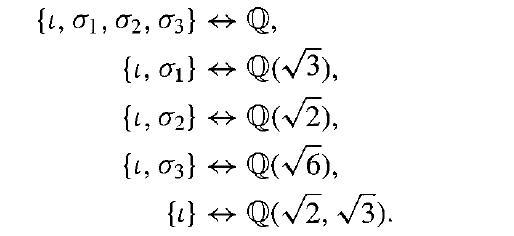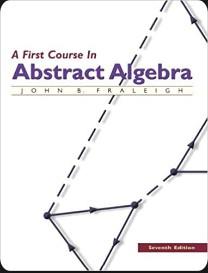Consider K = Q(2, 3). Referring to Exercise 17, compute each of the following (see Example 53.3).
Question:
Consider K = Q(√2, √3). Referring to Exercise 17, compute each of the following (see Example 53.3).
a. Nk/Q(√2)
b. NK/Q(√2 +√3)
c. NK/Q(√6)
d. NK/Q(2)
e. Trk/Q(√2)
f. Trk/Q(√2 + √3)
g. TrK/Q(√6)
h. Trk/Q(2)
Data from Exercise 17
Let K be a finite normal extension of a field F. Prove that for every α ∈ K, the norm of α over F, given by

and the trace of α over F, given by

are elements of F.
Data from 53.3 Example
Let K = Q(√2, √3). Now K is a normal extension of Q, and Example 48.17 showed that there are four automorphisms of K leaving Q fixed. We recall them by giving their values on the basis {1, √2, √3, √6} for K over Q.
ι : The identity map
σ1: Maps √2 onto -√2, √6 onto -√6, and leaves the others fixed
σ2 : Maps √3 onto -√3, √6 onto -√6, and leaves the others fixed
σ3 : Maps √2 onto -√2, √3 onto -√3, and leaves the others fixed
We saw that {i, σ1, σ2, σ3} is isomorphic to the Klein 4-group. The complete list of subgroups, with each subgroup paired off with the corresponding intermediate field that it leaves fixed, is as follows:

Step by Step Answer:






